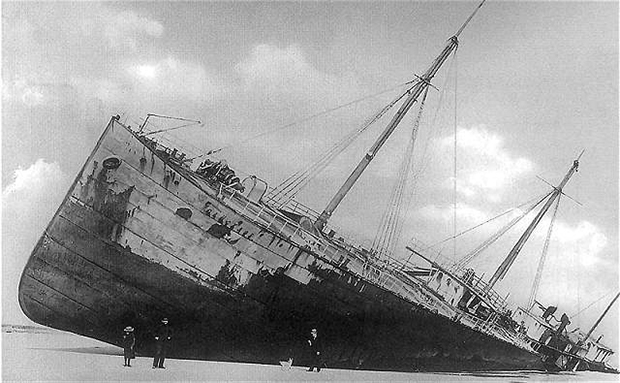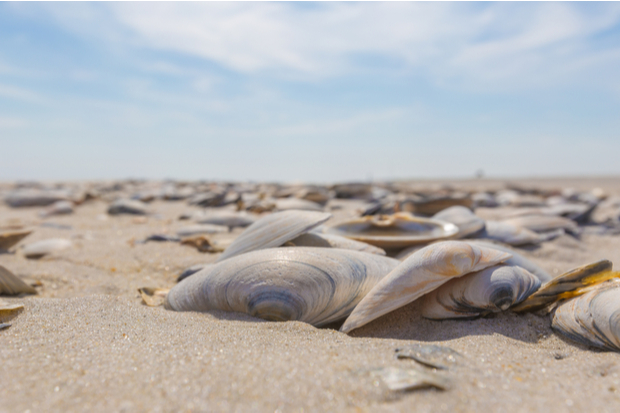Crazy Facts About Fire Island
Famous for its pristine beaches, the Fire Island National Seashore (FINS) protects 26 miles of the 30-mile-long barrier island. It’s also only accessible by boat, ferry and two bridges (Robert Moses Bridge to the west and Smith Point bridge to the east).
Below we present some historical and crazy facts about Fire Island.
- The original Algonquin name name for Fire Island is said to have translated to Seal Island, due to the seals that wintered there
- Native Americans hunted and fished in the vicinity long before Colonial settlements were established
- Originally Fire Island was a peninsula
- Storms in the 1690s created the Fire Island Inlet, which eventually became the name of the entire island
- In 1653, Isaac Stratford constructed a whaling station on the Island and named it Whalehouse Point
- According to the Fire Island Association, Fire Island was originally founded as an important whaling center during the 18th and 19th centuries
- In 1825, the Federal government constructed the Fire Island Lighthouse at western tip of the Island (Read more facts about the Fire Island Lighthouse here.)
- A 1789 deed of sale outlined property for sale from “the Head of Long Cove to Huntin East Gut of Fire Island Inlet”
- In 1882, Oscar Wilde is said to have stayed at the Perkinson Hotel in Cherry Grove during his tour of America
- The origin of the "Fire" part of the name for the inlet and the island is debated - it could be a misreading of the word “five,” referring to the five barrier islands back then or a misspelling of the word “vier,” meaning four in Dutch
- Other sources say that swamp fires on the island gave it the name or it might have come from fires of whalers boiling down whale blubber on the beaches
- It had been referred to other names including South Sand Beach and Great South Beach
- Pre-Revolutionary War slave-runners used the Fire Island inlet
- Pirates also used the island to store their loot
- It is said that so-called "ship wreckers" - people who lured ships to shore to kill the occupants and plunder the cargo - worked Fire Island for their nefarious deeds

German tanker Glückauf stranded on 23/24-3-1893 in heavy fog at Blue Point Beach at Fire Island. Tourists were common at the wreck site for years after. Photo: Public Domain.
- Bootleggers during prohibition also worked off Fire Island using the uninhabited beaches to waylay their goods
- Sunken Forest was a popular spot for rum runners to stash their alcohol
- The Surf Hotel, built in the 19th century on Fire Island, could accommodate up to 1,500 guests
- A 1936 hurricane broke open Moriches Inlet
- Sand filling in the inlets would make it a peninsula again but the inlets are dredged periodically
- Fire Island is 32-miles long and about 1/4 mile wide
- It has over 100-miles of coastline
- Fire Island is one of four barrier islands that protect the South Shore of Long Island from the Atlantic Ocean
- It is the longest of the barrier island on Long Island’s South Shore
- There are about 4,000 homes on Fire Island
- It has a year-round population of about 400 residents
- The population balloons to about 20,000 during the summer
- In the early 1960s, Robert Moses proposed a plan to build an ocean boulevard on top of restored dunes on the ocean side of the island that was vehemently opposed by residents
- Public meetings about the roadway were contentious and Moses walked out of one after being compared to Hitler
- In 1977, the first issue of The Fire Island Tide was published

Photo: Shutterstock.
- Fire Island has 17 car-free communities
- Cherry Grove is credited as being the first community in America where gays and lesbians could be open about their sexuality, according to The Long Island Press
- Ocean Beach is its largest village with the most year-round residents
- Ocean Beach was home to Fire island’s first elementary school (opened in 1918)
- The incorporated Village of Ocean Beach was first formed in 1921
- Point O' Woods is said to be the oldest community on Fire Island
- Fire Island Pines is considered a popular, chic spot with around 600 homes
- Fire Island Pines is also strongly associated with the gay community on Fire Island along with Cherry Grove
- Fire Island Pines boasts two-thirds of the swimming pools on Fire Island and a 100-unit co-op complex
- The population of Fire Island Pines swells from 12 residents to almost 3,000 in the summer
- Annually, the Invasion of the Pines, a drag-queen parade, is held on July 4th
- Former residents of Fire Island Pines include David Geffen and Calvin Klien
- The current Smith Point Bridge was erected in 1959
- The bridge is a 1,200 foot long drawbridge built at a cost of $2.5 million
- There are plans to construct a new bridge starting in 2021
- The new bridge will have a 55-foot clearance for boats and not be a drawbridge

Photo: Shutterstock.
- Clamming is popular on Fire Island. According to FireIsland.com, “Clams are to Fire Island what maple syrup is to Vermont”
- The Sunken Forest in Sailor’s Haven is one of the few remaining maritime forests on the eastern seaboard and spans over 40 acres of wildlife, according to FireIsland.com
- Trees in Sunken Forest are estimated to be over 200-years-old
- Surfcasting and tent camping are two popular outdoor activities on Fire Island
- Democrat Point, Smith Point, Fair Harbor and Davis Park all are cited as good surfing spots
- Over 300 species of birds have been spotted on Fire Island
- Poet Frank O’Hara lived and worked on Fire Island and was killed in an accident there in 1966
- The Village People sang a song about their funky weekends on Fire Island back in the disco era. Takeaway lyric: “Fire isla-and (fire, fire island) - it's a funky weekend (funky) a funky funky weeke-end. It's the place where you'll find me, the sun and sea, the place where love is free, yeah…”
